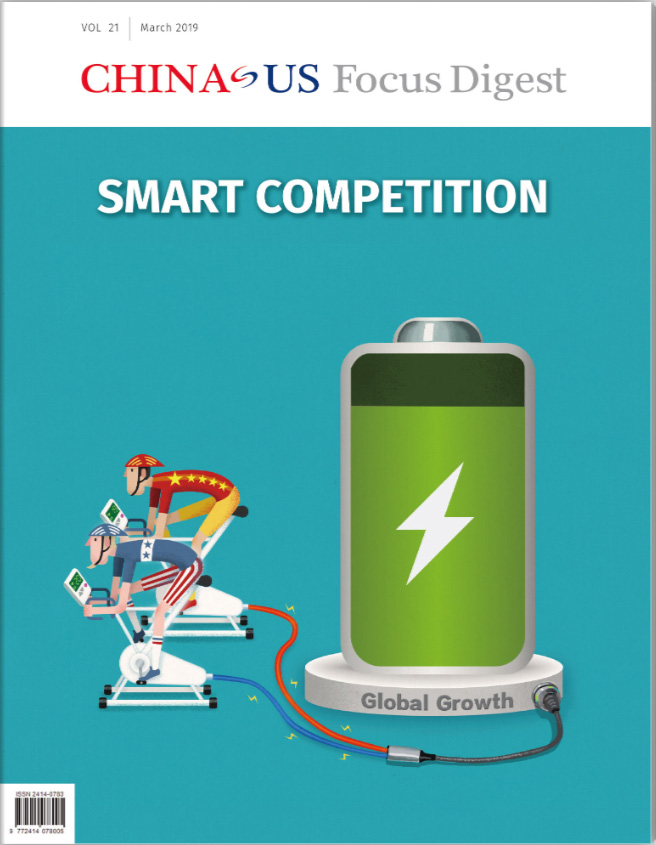(China-US Focus Digest VOL 21)
The year 2019 ended with a phase 1 agreement in the trade wars that disrupted the US-China relationship, but few observers believe the truce has set the scene for a more placid new year. Defenders of the Trump administration argue that his unorthodox style and willingness to break rules and spurn institutions will produce major gains on issues like China’s coerced technology transfer and neo-mercantilist practices.
Others are skeptical that basic Chinese practices have altered. Trade expert Claude Barfield argues that Trump’s coercive manipulation of trade interdependences failed, and the limited deal reached in 2019 signals that “the Trump administration has given up on the legitimate demands made over the past three years” which included China’s lax intellectual property laws and regulations, forced technology transfers, closed markets for key high-tech sectors, and sweeping definitions of national and cyber security, among other issues. But many in the administration and the Congress are unlikely to drop these issues.
There are many strands of interdependence in the US-China relationship and the symmetry of vulnerability varies with each one. In a November speech in San Diego, former Australia Prime Minister Kevin Rudd neatly summarized six different dimensions.
Trade:
Over the past decade, the US received 19% of China’s exports while China represented only 8% of US total exports. China’s leadership knows that the US can inflict more damage on China from trade than vice versa, but they also know that US consumers are dependent on a range of goods that cannot be readily replaced in the near-term. Thus, despite a two-to-one asymmetry, “America does not have all the cards in this game and China knows it.”
Foreign Direct Investment:
In 2019, the total stock of US FDI in China reached $269 billion while Chinese FDI in the US reached $145 billion, but annual flow rates have been decreasing as both sides tighten policy constraints. Rudd concluded that decoupling is happening in this area more rapidly than expected.
Technology:
China’s program “Made in China 2025” and its goal to be first in artificial intelligence by 2030 have made American government and companies more wary about the US’s high degree of technological interdependence with China. Rudd concluded that a significant degree of technological decoupling is not only underway but “began nearly two decades ago when China decided to embark on internet sovereignty to restrict the free flow of information to its citizens.”
Capital Markets:
The overall financial relationship amounts to over $5 trillion including nearly $2 trillion in Chinese listings on US stock exchanges and $1.3 trillion in Chinese official holdings of US government bonds. Rudd argued that “whatever strategic difficulties these two governments may have with each other, it continues to be in each countries’ interests to maintain these arrangements.” In other words, little decoupling.
Currency Markets:
While China would like to see the yuan play a larger role in world markets, it is unwilling to make the domestic reforms to create deep and flexible convertible currency markets and a rule of law needed for the yuan to become a major reserve currency. Only 2% of global reserves are held in yuan; 62% are held in dollars. The status quo will persist for a time.
Education, Research and Talent:
Over three million Chinese students have been educated in American universities over the past 20 years, and over 350,000 Chinese students study in the US each year. Over the past two years, however, there was a decline in international enrollments in American universities, and policy changes have made various types of visas more difficult to obtain. Rudd concluded that there are early signs of decoupling in the area of talent.
In other words, although Vice President Mike Pence disavowed a general policy of decoupling in an October speech, some degree of partial decoupling is bound to increase in the coming year, particularly in areas related to technology that directly affect national security. Both sides will wish to limit vulnerabilities that endanger critical infrastructure or have important implications for military postures. Some measures will be unilateral such as those Beijing has been undertaking for more than a decade. As for American measures to restrict sensitive technology transfer via trade, investment, and scientific exchanges, the National Bureau of Asian Research recently warned that “developing a control regime that reduces risk without imposing undue costs will not be easy.”
Intricate supply chains are not easily undone. Bilateral and multilateral negotiations can help to prevent partial technological disengagement from degenerating into a stampede toward full protectionism. For example, last year a group of American and Chinese economists suggested establishing a framework for trade policy between divergent nations that would distinguish areas for bilateral negotiations and suggest adjustment in areas where countries are allowed to undertake well-calibrated domestic policy adjustments that minimize harm to its domestic economy. Other policies that involve spillover damage to third countries would be handled by multilateral arrangements.
The more difficult question for an election year will be whether the United States and China will develop attitudes that allow them to cooperate in producing global public goods and managing interdependence while competing in other areas. Exaggerated fears and worst-case analyses may make such a balanced policy impossible. The US-China relationship is a “cooperative rivalry” where a successful strategy of “smart competition” will require equal attention to both aspects of that description .

